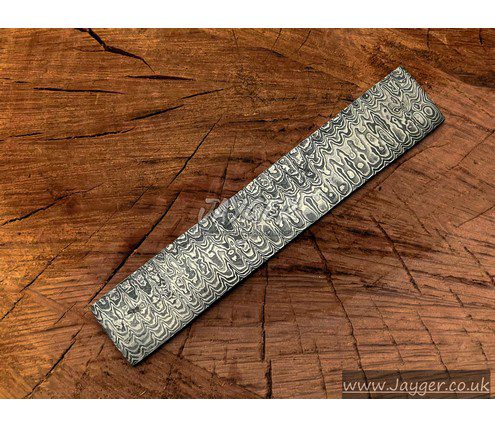If you’re a knife enthusiast or collector, you know that the quality of the blade is crucial. And if you’re looking for the ultimate choice for your next knife, you can go right with Damascus steel billet. These billets are made by combining two or more types of steel. Creating a unique pattern in the metal that is beautiful and functional. But Damascus steel is more than just a pretty pattern – it’s known for its exceptional strength, durability, and sharpness. The steel’s unique composition makes it ideal for creating sharp, long-lasting blades that withstand heavy use. Plus, the beautiful patterns created by the steel layers make each blade one-of-a-kind, making them a popular choice for collectors and knife enthusiasts alike. In this article, we’ll look closer at why Damascus steel billets are the ultimate choice for those in the market for a high-quality knife.
What is Damascus steel?
Damascus steel is a type of steel that is made by combining two or more different types of steel. Making Damascus steel involves folding and hammering the metal repeatedly, creating layers of steel forged together. This process creates a unique pattern in the metal that is both beautiful and functional. The pattern is created by the different types of steel used and the way the metal is folded and hammered. The result is a blade that is visually stunning and incredibly strong, durable, and sharp.
History of Damascus Steel
The history of Damascus steel can be traced back to the Middle East, where it was first created over a thousand years ago. The steel was highly prized for its strength, durability, and unique pattern. At the time, Damascus steel was considered the best steel in the world, and it was used to create some of the most legendary weapons of all time, including the swords of Saladin and the Crusaders. However, the exact process of creating Damascus steel was lost to history, and the steel was only seen again in the 20th century when modern metallurgists began to recreate it using modern technology.
Characteristics of Damascus steel billet
Damascus billet are known for their unique pattern, created by the layers of steel that are folded and hammered together. The pattern is not only beautiful but also functional. As it helps to strengthen the steel and make it more durable. Damascus steel is also known for its exceptional sharpness due to how the layers of steel are folded and hammered together. The result is a blade that can hold a sharp edge for a long time, even with heavy use.
Benefits of using Damascus billets for knife making
There are many benefits to using Damascus steel billets for knife making:
- The steel’s unique pattern makes each blade one-of-a-kind, which is a big draw for collectors and knife enthusiasts.
- The steel’s exceptional strength and durability make it ideal for creating sharp, long-lasting blades that withstand heavy use.
- The steel’s sharpness is second to none, making it the perfect choice for anyone who wants a knife that can easily cut through anything.
Types of Damascus steel patterns
There are many types of billet steel patterns, each with a unique look and feel. The most popular patterns include a ladder, raindrop, twist, and feather. Each pattern is created by how the layers of steel are folded and hammered together, and each has its unique characteristics. For example, the ladder pattern has straight lines that run parallel. While the raindrop pattern has small teardrop-shaped dots resembling raindrops.
How to choose the suitable steel billet for your knife making project
When choosing a Damascus steel billet for your knife making project, there are a few things to consider:
- You’ll want to select a pattern you like, as each pattern is unique.
- You’ll want to choose a billet that is the right size and shape for your project.
- You’ll want to consider the quality of the steel, as not all Damascus steel is created equal.
Look for billets made from high-quality steel that has been adequately forged and heat-treated.
Care and maintenance of Damascus knives
To keep your Damascus steel knife in top condition, it’s essential to take good care of it:
- Clean the blade using warm soapy water and a soft cloth after each use. Avoid using abrasive cleaners or harsh chemicals, which can damage the steel.
- Keep your knife dry and store it in a dry place to prevent rust from forming.
- Sharpen your knife regularly to maintain its sharpness.

